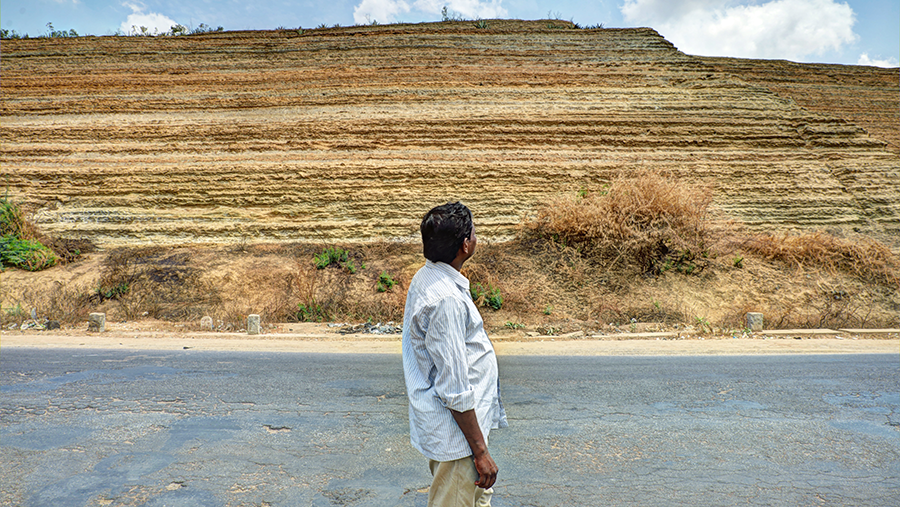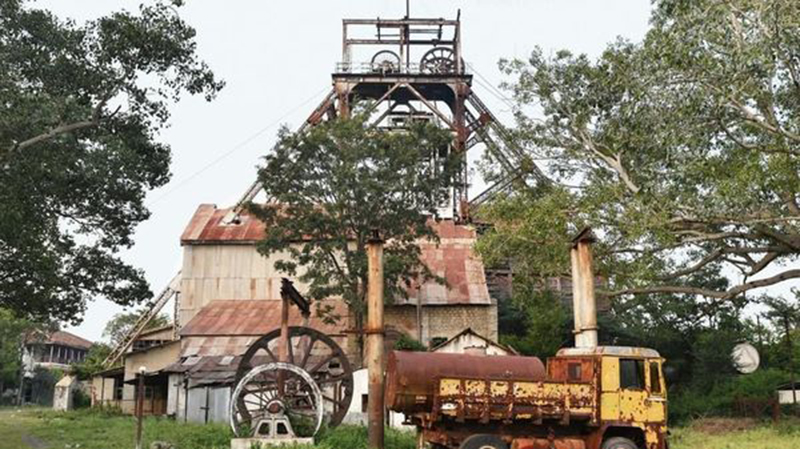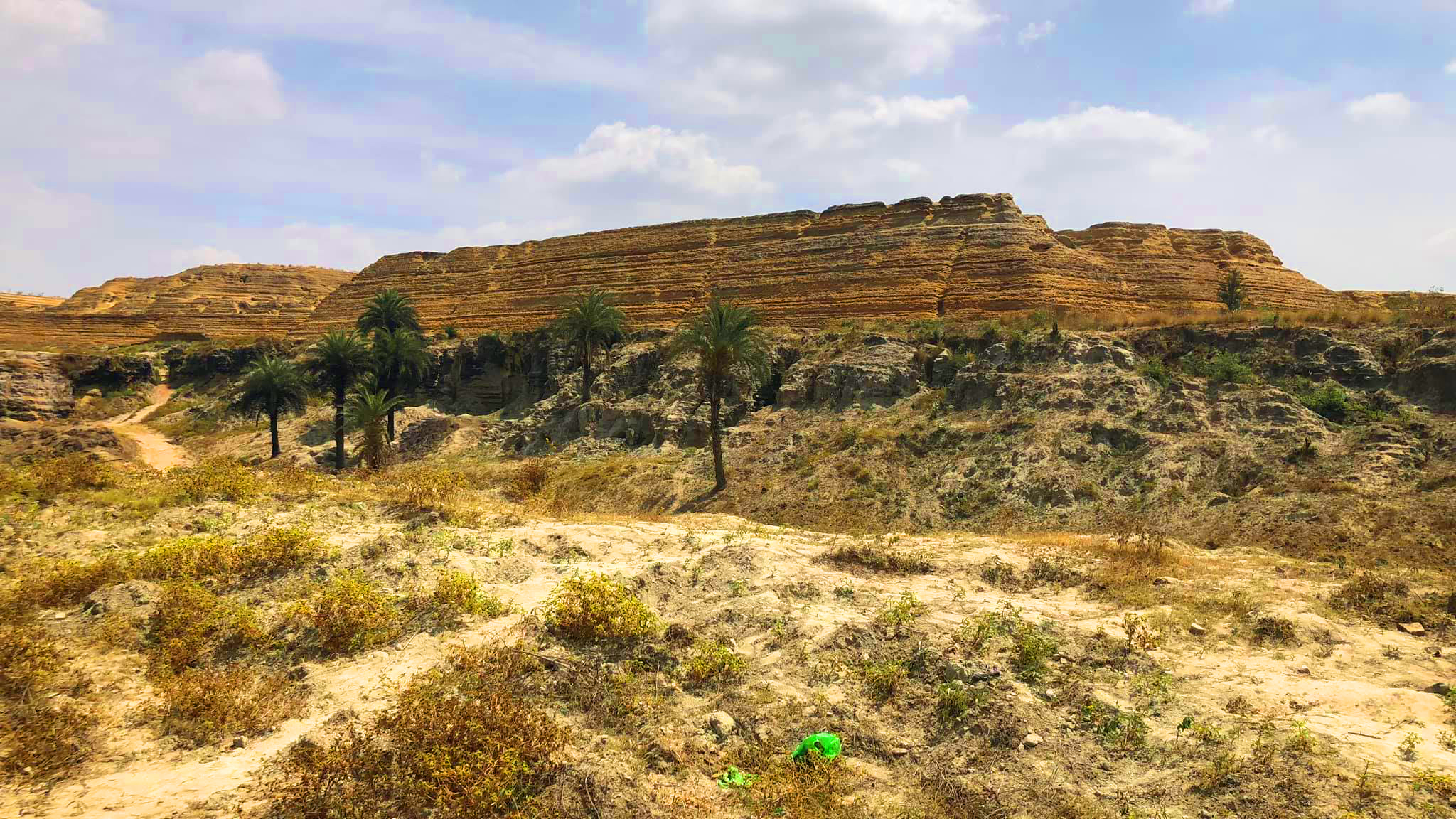Kolar Gold Fields or KGF is a mining region and belongs to a KGF taluk, in the Kolar District of Karnataka state, India. Robertsonpet is the headquarters of Kolar Gold Fields. It had produced tonnes and tonnes of gold.
It includes the township of the same name, viz. K.G.F, where reside mainly the families of the employees of Bharat Gold Mines Limited (BGML) and BEML (formerly Bharat Earth Movers Limited). KGF is about 30 kilometres (19 mi) from Kolar, 29 kilometres (18 mi) from Kuppam, 152 kilometres (94 mi) from Hogenakkal waterfalls and 100 kilometres (62 mi) from Bangalore.
To the east of KGF is a ridge of hills of which Dodda Betta Hill is 3195 feet above sea level. The town was known for gold mining for over a century, which was eventually closed in 28 Feb 2001 due to inflation of gold rates, despite the gold present in Mines. India’s first power generation unit was created exactly to support operations of the KGF in early 1889s.
Early history of the Kolar Gold Fields compiled by Superintendent of the Wesleyan Tamil Mission, Bangalore and Kolar Gold Fields. His studies and observations have been published in the quarterly journals of the Mythic Society and other academic journals.
In about the second century, the Gangas founded Kolar and as long as they were in power, for nearly a thousand years, they took the title ‘Kuvalala-Puravareshwara’ (the Lord of Kolar) even after they had shifted their capital to Talakadu. From Kolar, and later from Talakadu, the Gangas ruled over Gangavadi comprising the southern districts of the Kannada people.
The records are clear that Kolar came under Chola rule in 1004 for the first time. In accordance with their usual system, the Cholas gave the name Nikarilichola-mandala to the district. In around 1117 AD, the Hoysalas under Vishnuvardhana captured Talakad and among his conquests he captured Kolar and drove the Cholas from Mysore state. On the death of Somesvara, in 1254, a partition of Hoysala dominions took place between his two sons, and the Kolar district was included with the provinces to the share of Ramanatha. The next king, Ballala III however reunited the Hoysala dominions.
Kolar is much older than Bangalore, its origin going back to the 2nd century AD. Gangas made Kolar their capital and ruled over Mysore, Coimbatore, Salem and Trave. In the 13th Century AD, Sage Bhavanandi composed his treatise on Tamil grammar Nannool at the Ulagamadhi cave at KGF, under the patronage of Seeya Gangan one of the Ganga rulers who was born in Kolar and was a patron of arts and literature. Further Seeya Gangan’s inscriptions indicate that Kolar regained control of Kolar for the second time from Chola hands.
 During the reign of the Cholas, King Uththama Chola (970 AD) is said to have built the temple for Goddess Renuka. The Chola rulers Veera Chola, Vikrama Chola and Raja Nagendra Chola erected stone structures with inscriptions at Avani, Mulbagal, Sitti Bettta and other places. Chola inscriptions also indicate the rule of Adithya Chola I (871-907 AD), Raja Raja Chola I and Rajendra Chola I over Kolar. These inscriptions refer to Kolar as ‘Nikarili Cholamandalam’ and also as ‘Jayam Konda Chola Manadalam’.
During the reign of the Cholas, King Uththama Chola (970 AD) is said to have built the temple for Goddess Renuka. The Chola rulers Veera Chola, Vikrama Chola and Raja Nagendra Chola erected stone structures with inscriptions at Avani, Mulbagal, Sitti Bettta and other places. Chola inscriptions also indicate the rule of Adithya Chola I (871-907 AD), Raja Raja Chola I and Rajendra Chola I over Kolar. These inscriptions refer to Kolar as ‘Nikarili Cholamandalam’ and also as ‘Jayam Konda Chola Manadalam’.
Inscriptions of Rajendra Chola I also appear on the Kolaramma Temple. Many Siva temples were built in Kolar during the reign of the Cholas, such as the Someshwarar Temple at Maarikuppam Village, Sri Uddhandeshwari Temple at Maarikuppam Village, the Eswaran Temple at Oorugaumpet, the Sivan Temple at Madivala Village. The reign of the Cholas over Kolar lasted till 1116 AD.
Sadly, the Chola inscriptions scattered all over Kolar lie neglected, and some subject to wilful cultural vandalism. According to B. Lewis Rice, this story is evidently based on some confused reminiscence of certain names and historical events.
From the records of the period, we know that the Cholas subverted the power of the Gangas by the capture of Talakad in about 1004, and speedily possessed themselves of all the south and east of Mysore. The important city of Kolahala, or Kolar, thus became subject to them, together with the whole of the present Kolar District.

In 1117 AD, Kolar came under the reign of the Hoysalas, and in 1254 AD the dominions were portioned among the two sons of King Someshwara, with Kolar included in the provinces that went to Ramanatha. The next king, Ballala III, however reunited the Hoysala dominions.
The Hoysala were defeated by the Vijaynagar Kingdom, and their rule over Kolar lasted from 1336-1664. During their reign the Sri Someshwara Temple at Kolar was built. During this time, in 1418 Thimme Gowda of the Morasu Vokkalu clan struck a treaty with the Vijayanagar Kings and ruled the Kolar District. His successors ruled for over four generations.
In the 17th Century, Kolar came under Maratha rule as part of the Jahagir of Shahaji for fifty years. Then under Muslim rule for seventy years. In 1720 AD, Kolar came under the Suba of Sira, with Fateh Mohammed, the father of Hyder Ali becoming the Faujdar of the province. After this Kolar passed through different reigns such as Marathas, the Nawab of Cuddapah, Nizam of Hyderabad and finally Hyder Ali. In 1768, Kolar came under British rule briefly till 1770, then passed briefly again to Maratha rule and again Hyder Ali. In 1791 Lord Cornwallis conquered Kolar, before passing it back to Mysore under the peace treaty of 1792. Kolar has been part of the Mysore State since that time.

With the growth of the Gold Mines and the resulting demand for labour, people from Dharmapuri, Krishnagiri, Salem, the North and South Arcot districts of Tamil Nadu and Chittoor, Madanapalli and Ananthapur districts of Andhra Pradesh, were settled around the various shafts. In course of time these habitations expanded to merge into each other to form the outer reaches of the town of KGF.
In the core of the town were the families of British and Indian engineers, geologists and mine supervisors who lived a grand colonial lifestyle complete with golf course, tennis court, club with dance halls and bars, cottages and Bungalows with gardens and quarters for the employees and churches and chapels. The ruins of these structures and some memorabilia continue to exist even today. Many places in the area have names reminiscent of the raj. The two main townships which came up subsequently in KGF were Robertsonpet and Andersonpet, named after two British officers in the mines.

The Kolar Gold mines were nationalized in 1956 and provided over 900 tonnes of Gold in total. However, they were closed by the Indian Government on 28th February 2001 due to environmental reasons, wrong pricing policy and lack of investment in new exploration.
The place is the central plot of the Kannada-language blockbuster film K.G.F: Chapter 1.


















